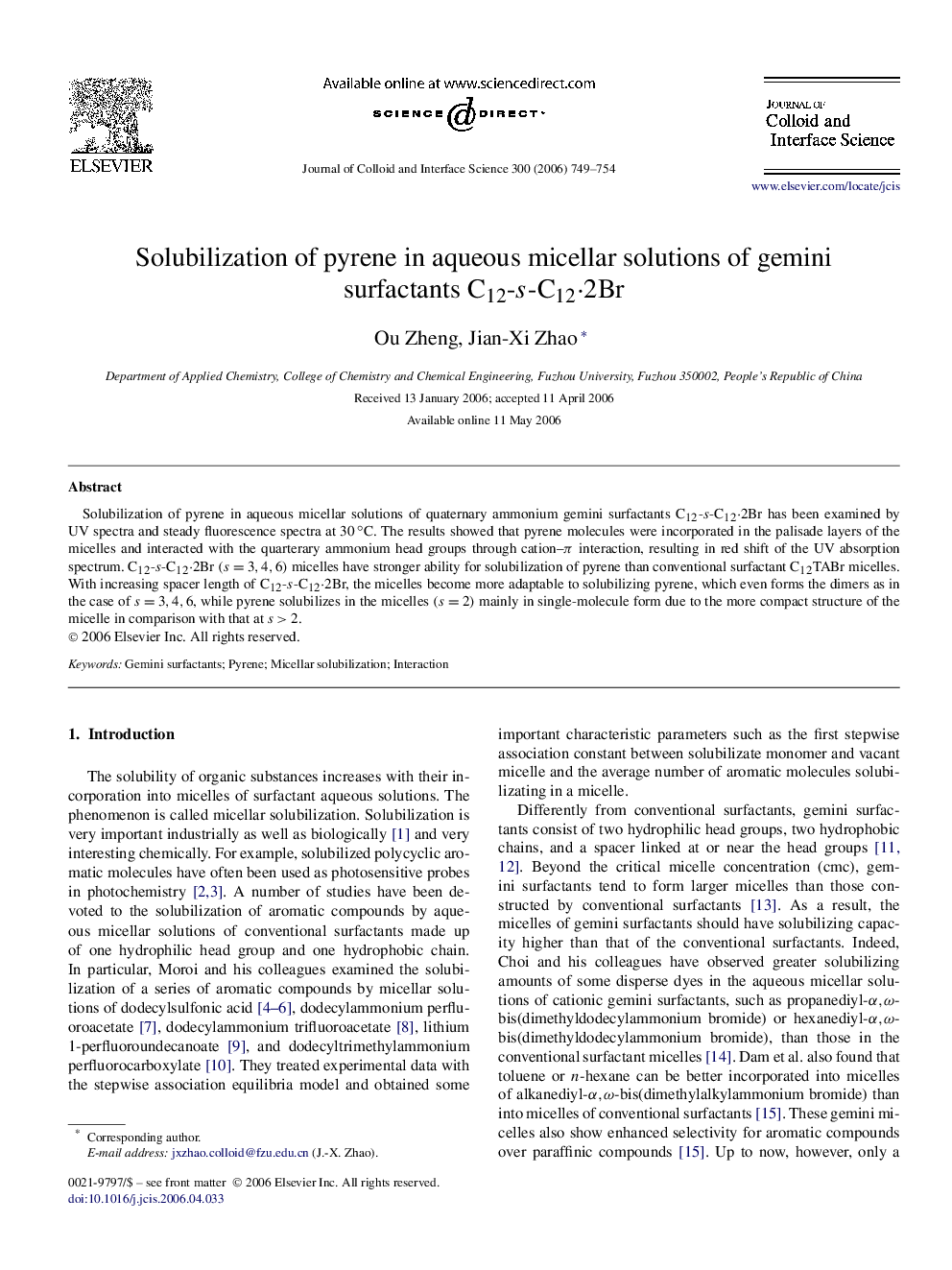| Article ID | Journal | Published Year | Pages | File Type |
|---|---|---|---|---|
| 613016 | Journal of Colloid and Interface Science | 2006 | 6 Pages |
Solubilization of pyrene in aqueous micellar solutions of quaternary ammonium gemini surfactants C12-s-C12⋅2Br has been examined by UV spectra and steady fluorescence spectra at 30 °C. The results showed that pyrene molecules were incorporated in the palisade layers of the micelles and interacted with the quarterary ammonium head groups through cation–π interaction, resulting in red shift of the UV absorption spectrum. C12-s-C12⋅2Br (s=3,4,6)(s=3,4,6) micelles have stronger ability for solubilization of pyrene than conventional surfactant C12TABr micelles. With increasing spacer length of C12-s-C12⋅2Br, the micelles become more adaptable to solubilizing pyrene, which even forms the dimers as in the case of s=3,4,6s=3,4,6, while pyrene solubilizes in the micelles (s=2)(s=2) mainly in single-molecule form due to the more compact structure of the micelle in comparison with that at s>2s>2.
Graphical abstractC12-s-C12⋅2Br micelles have stronger ability for solubilization of pyrene than the conventional surfactant C12TABr micelle. With s increasing, the micelles become more adaptable to solubilizing pyrene, which even forms dimers as in the case of s=3,4s=3,4, and 6, while pyrene solubilizes in the micelles (s=2)(s=2) mainly in single-molecule form.Figure optionsDownload full-size imageDownload as PowerPoint slide
